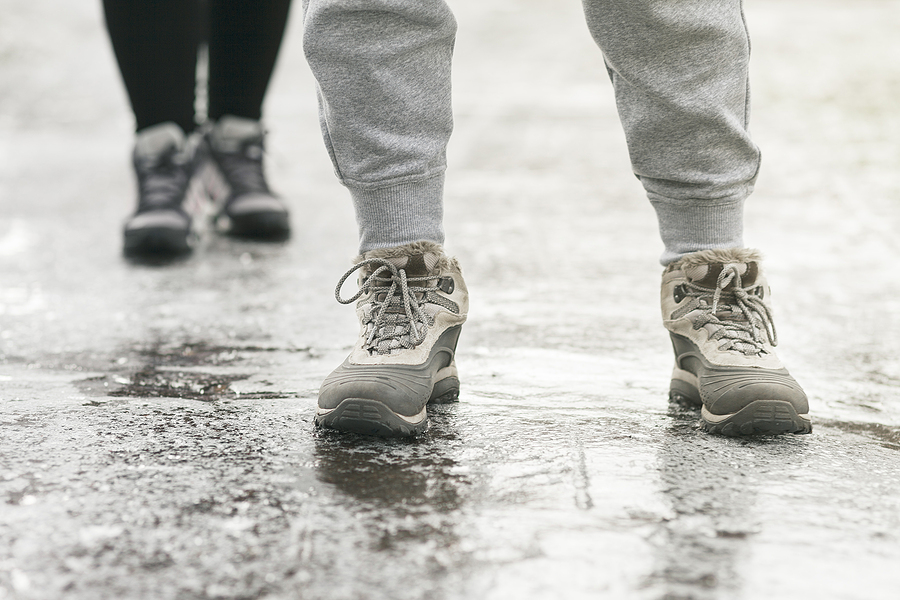
Summary:
- Slipping and falling on ice and snow can cause catastrophic injuries.
- Unfortunately, state law doesn’t provide guidance on who is responsible for clearing ice and snow from a property. Municipalities typically establish those rules.
- Injury victims must contact an experienced attorney to have the best chance of obtaining compensation.
On average, between 1,500-2,000 people suffer severe injuries after falling on ice in Minnesota from December to March. That number is twice the amount of fall-related injuries over the other eight months of the year. Slip and fall accidents during winter aren’t just a matter of inconvenience. They can lead to severe injuries and legal complications.
The attorneys with Sand Law have a great deal of experience helping clients who suffered severe injuries after slipping on ice or snow due to another’s negligence. If this has happened to you, we’re ready to help you obtain maximum compensation. Please call 651-291-7263 or contact us online for a free consultation.
Who’s Responsible for Clearing Ice and Snow?
This question is more complex than you may assume. Several Minnesota cities have ordinances requiring property owners to clear sidewalks within 24 hours after an ice or snow event. There are rare instances where someone who slips on a city-owned public sidewalk may be able to sue the municipality that owns the property.
But what does Minnesota state law have to say about private property owners’ responsibility to clear snow and ice? Unfortunately, not a lot. According to Section 366.016 of the 2023 Minnesota Statutes, municipalities can vote on whether or not to require owners to do so.
If the municipality votes “yes” and the owner fails to remove ice and snow, the municipality can perform the removal and charge the owner.
So, since state law basically doesn’t address this issue, can you sue a property owner who violates a municipal ordinance? It depends on the circumstances of the case. You must contact a personal injury lawyer who has experience in this area. Once you tell them the details of your accident, they’ll let you know whether or not you have grounds to pursue legal action.
The Dangers of Uncleared Ice and Snow
Uncleared ice and snow pose significant dangers to pedestrians. The primary risk lies in the reduced traction these conditions provide. When ice or compacted snow covers surfaces, people walking on them are more susceptible to slipping and losing their balance.
Also, melted snow can refreeze, creating invisible patches of ice that are especially treacherous. This black ice is often difficult to detect, making it a common culprit in slip and fall accidents. The unpredictability of these hazards increases the likelihood of accidents, making it crucial for property owners to promptly address and clear these conditions.
Where Do Winter Slip and Falls Occur Most?
Winter slips and falls can happen virtually anywhere, but specific locations are more prone to these accidents. Sidewalks, parking lots, driveways, and building entranceways are common sites. Pedestrians frequently walk in these areas and are at high risk for severe injuries if owners don’t properly maintain their property.
Commercial establishments, such as stores and malls, are particularly vulnerable to accidental falls during winter due to the high volume of foot traffic. Owners must diligently maintain their property to prevent accidents.
Potential Liable Parties in Winter Slip and Fall Accidents
Determining liability in winter slip and fall accidents involves identifying the party responsible for maintaining the property where the accident occurred. Property owners, whether residential or commercial, are typically the primary targets for liability claims.
In the case of commercial properties, the business or municipality leasing the premises may share liability with the property owner. For instance, a store leasing space in a shopping center could be responsible for immediately clearing the area surrounding its entrance.
Again, though, since state law provides very little guidance on this issue, determining liability is complicated. You need the help of a seasoned lawyer who knows how to investigate and assess blame.
Steps to Take After Slipping on Ice
If you’ve experienced a slip and fall on ice, taking prompt and appropriate steps is crucial to protect your well-being and potential legal claims. Here are some to keep in mind:
- Seek medical attention: See a doctor immediately, whether or not you think you’re seriously hurt. Even seemingly minor injuries may have long-term consequences.
- Document the scene: If possible, document the scene of the accident. Take photographs of the icy or snowy conditions, any warning signs (or lack thereof), and the location of the incident.
- Gather witness information: Collect contact information from witnesses who saw what happened. Their testimony can be valuable when establishing the circumstances of the accident.
- Report the incident: Immediately inform the property owner or manager of the accident. If the incident occurred in a commercial establishment, the business may have a process for documenting such events.
- Preserve evidence: Retain any relevant evidence, such as clothing worn during the incident or the shoes you had on. These items may serve as evidence if legal action becomes necessary.
Contact Sand Law to Speak with an Experienced Slip and Fall Accident Attorney ASAP
Consulting with an attorney is essential when seeking compensation for slip and fall injuries caused by ice and snow. Since these cases are so complex, your only chance of obtaining the money you deserve will be hiring skilled legal representation.
Sand Law attorneys have extensive experience in personal injury cases, including slip and fall accidents during winter conditions. Our team can provide guidance, assess the details of your case, and help you understand your legal options. Don’t delay – contact us promptly to ensure your rights are protected.
Schedule a free case review by using our online form or calling 651-291-7263.
Frequently Asked Questions
How is liability determined in a slip and fall accident?
You must prove that the property owner had a duty to maintain safe conditions, breached this duty by failing to address hazardous ice and snow, and that the breach directly resulted in the slip and fall. Evidence such as photographs, witness statements, and the property owner’s maintenance history can contribute to determining liability.
How long do I have to file a slip and fall case in Minnesota?
Minnesota’s statute of limitations for filing a slip and fall case is generally six years. Delaying the filing of your case beyond the statute of limitations may result in the dismissal of your claim.
How much compensation will I receive for my slip and fall damages?
The amount of compensation for slip and fall damages varies based on the specific circumstances of each case. Courts consider factors such as the severity of injuries, medical expenses, lost wages, pain and suffering, and other damages when determining compensation. Sand Law can help you understand the potential value of your claim and pursue fair compensation.

